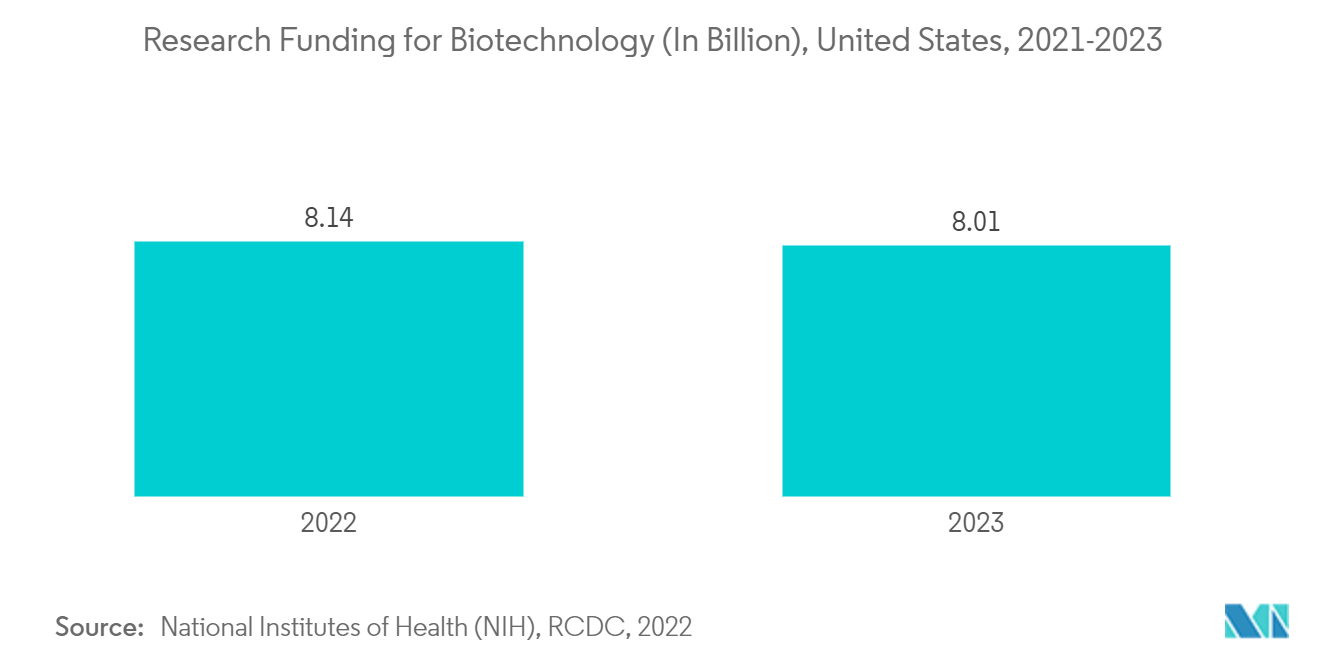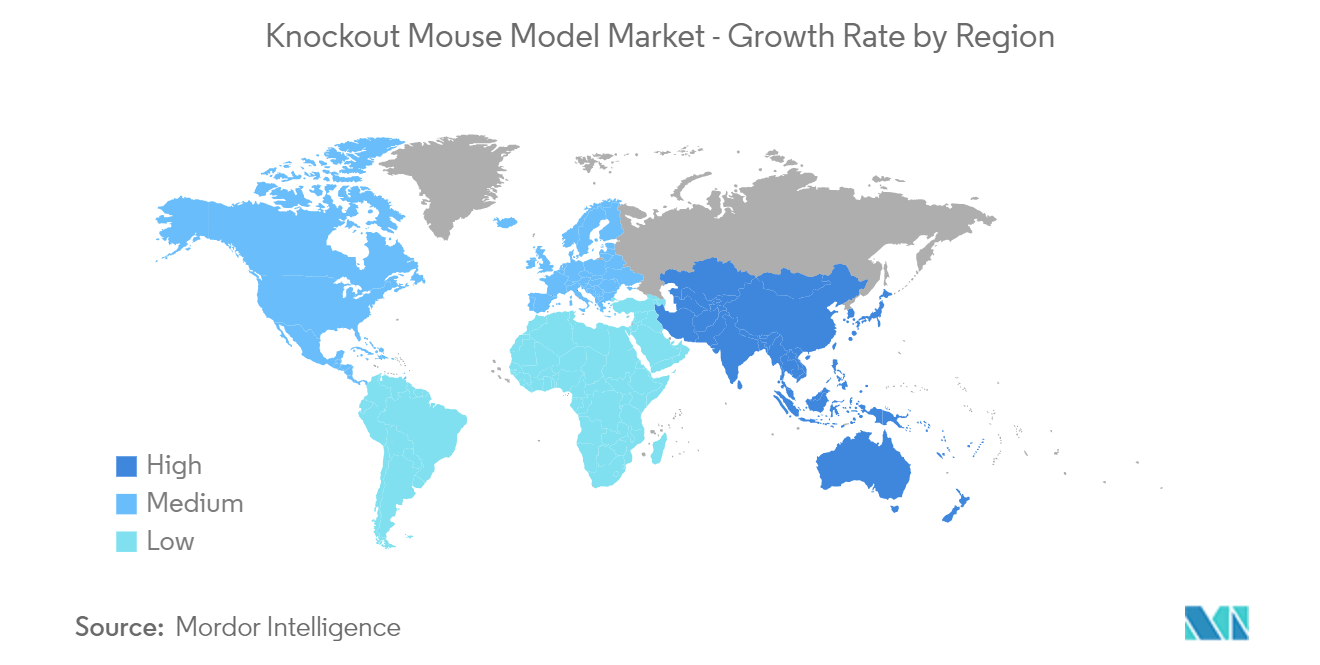Market Trends of Knock Out Mouse Model Industry
Conditional Knockout Mouse Segment is Expected to Hold Significant Share in the Market Over the Forecast Period
In conditional knockout mice, a gene is inactivated in a specific tissue to study the function of individual genes and model human diseases. Due to the various advantages of conditional knockout mouse models over other models, the segment is expected to include significant growth in the market. The rising pharmaceutical investment and expenditure and strategic initiatives adopted by the market players are augmenting the demand for conditional knockout mouse models, contributing to the market growth.
For instance, as per the report published by Cyagen Biosciences in April 2021, conditional models offer greater temporal and regional control of gene expression than constitutively expressed gene mutations, making them a more accurate model for researching human diseases. It shows the added advantages of conditional models over other models, which increases the usage of these models and is expected to boost the growth of the segment in the market.
Furthermore, the increasing usage of conditional knockout mouse models in research and development is expected to drive the market. For instance, as per the study report published by iScience in July 2021, conditional knockout (cKO) of Celsr3 in postnatal Purkinje cells of mice exhibited a deficit in motor coordination and learning, atrophic Purkinje cell dendrites, and decreased synapses. Using Celsr3-GFP mice, Celsr3 shows high expression in postnatal Purkinje cells. These studies help in various types of research, which likely propel the market over the study period.

North America is Expected to include Significant Share in Market Over the Forecast Period
North America is expected to include a significant share in the market with its well-established healthcare infrastructure, better regulatory framework, and government support and presence of many large biotechnological and biopharmaceutical firms in developed countries like the United States and Canada. In addition, the rising demand for personalized medicine research activities is expected to boost the market to grow in the region.
For instance, in July 2022, Tenaya Therapeutics, Inc. published the preclinical research data in Science Translational Medicine detailing the discovery of HDAC6 inhibitors as cardioprotective in a BAG3 mouse model of dilated cardiomyopathy. To further validate the potential of HDAC6 inhibition, Tenaya translated its initial in vitro findings to a BAG3 cardiomyocyte knockout mouse model of dilated cardiomyopathy. It shows the new application of the knockout mouse model, which increases the usage of the model and is expected to boost the market over the forecast period.
Similarly, the approval of these models for clinical development is expected to drive the market. For instance, in March 2022, Taysha Gene Therapies, Inc. initiated the clinical development of TSHA-102 for treating Rett syndrome under an approved Clinical Trial Application (CTA) by Health Canada. The pharmacologic activity of TSHA-102 following intrathecal (IT) administration was assessed in the MECP2 knockout mouse model of Rett syndrome across three dose levels and three age groups. Thus, these models' new research activities and approvals are expected to boost market growth over the forecast period.


